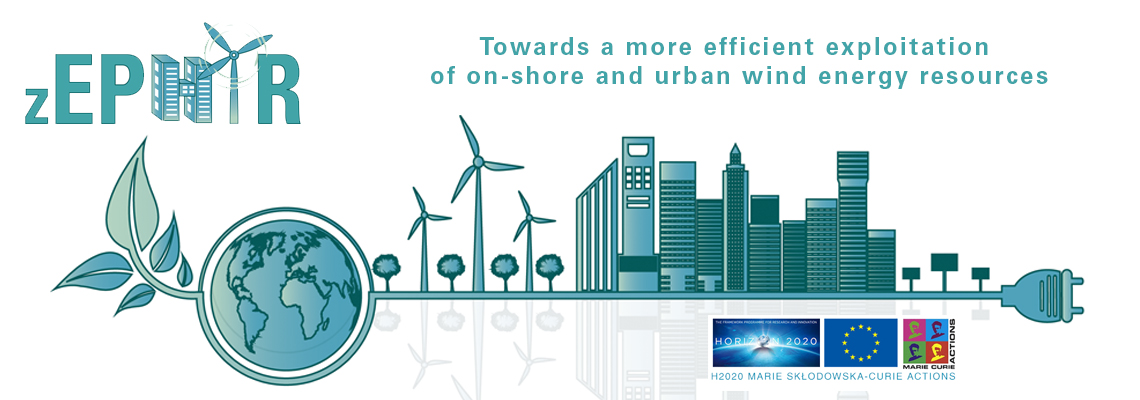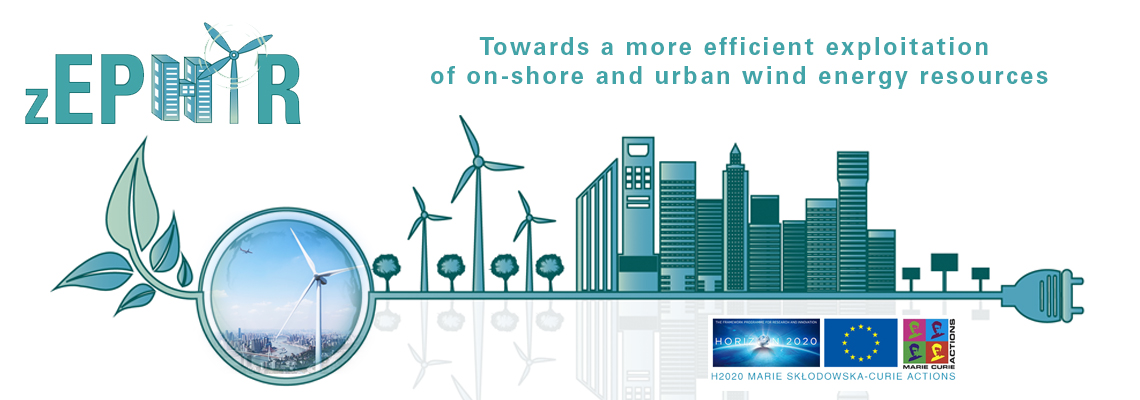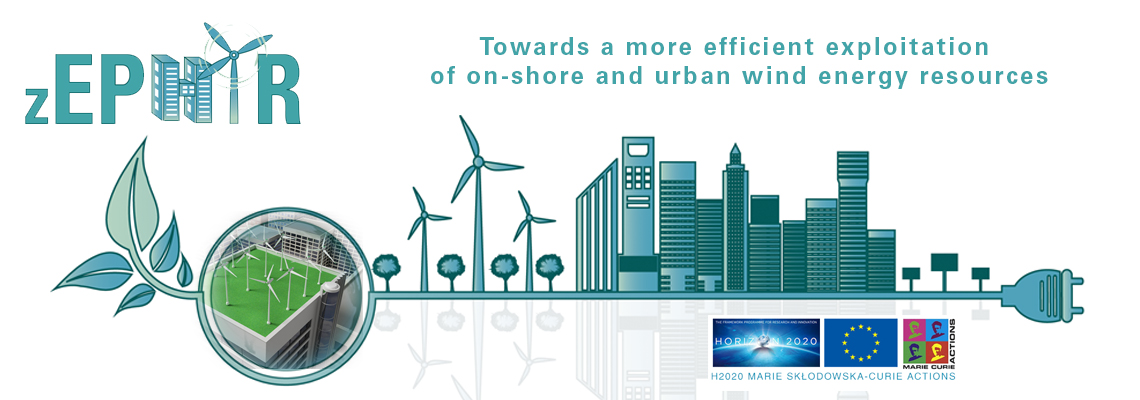zEPHYR has the following objectives:
- Foster a training-through-research network of young researchers, where the ESR fellows will investigate and further develop promising emerging technologies enabling a more efficient harvesting of wind energy resources in ‘conventional’ on-shore as well as urban environments through more accurate and robust simulation methodologies, supported by laboratory experiments and theoretical models, and applying novel optimization approaches.
- Bring in a coordinated research environment top-rank academia, research centres and industrial stakeholders, actively involved in top-level research in the fields of fluid dynamics, aeroacoustics, structural dynamics and fatigue life prediction, Uncertainty Quantification, optimization methods, system dynamics and control, and human factors.
- Offer an unprecedented training infrastructure where the young researchers will not only acquire the necessary scientific skills, but will also be confronted with the intricacies of an innovation process including integration, manufacturing, economical constraints, through strong interactions with the industrial world.
Two on-shore application areas will be considered:
i) horizontal axis wind turbines (HAWTs) with sizes corresponding to the current state-of-the-art (~ 5-10 MW), and
ii) urban wind turbines, with a focus on the most promising concepts for urban integration such as vertical axis wind turbines (VAWTs), diffuser-augmented wind turbines (DAWTs) and building-integrated wind turbines (BIWTs).
Besides the aerodynamic performance and durability issues that are raised by the specific flow features of urban environments, the successful deployment of green Aeolian energy in cities will crucially depend on the visual and acoustic annoyance aspects, affecting the societal acceptance of such novel concepts.




